Gas Stoves and Politics
Floras Suffer from Freezes



The Battle for Energy
Climate Change Affects Austin Animals
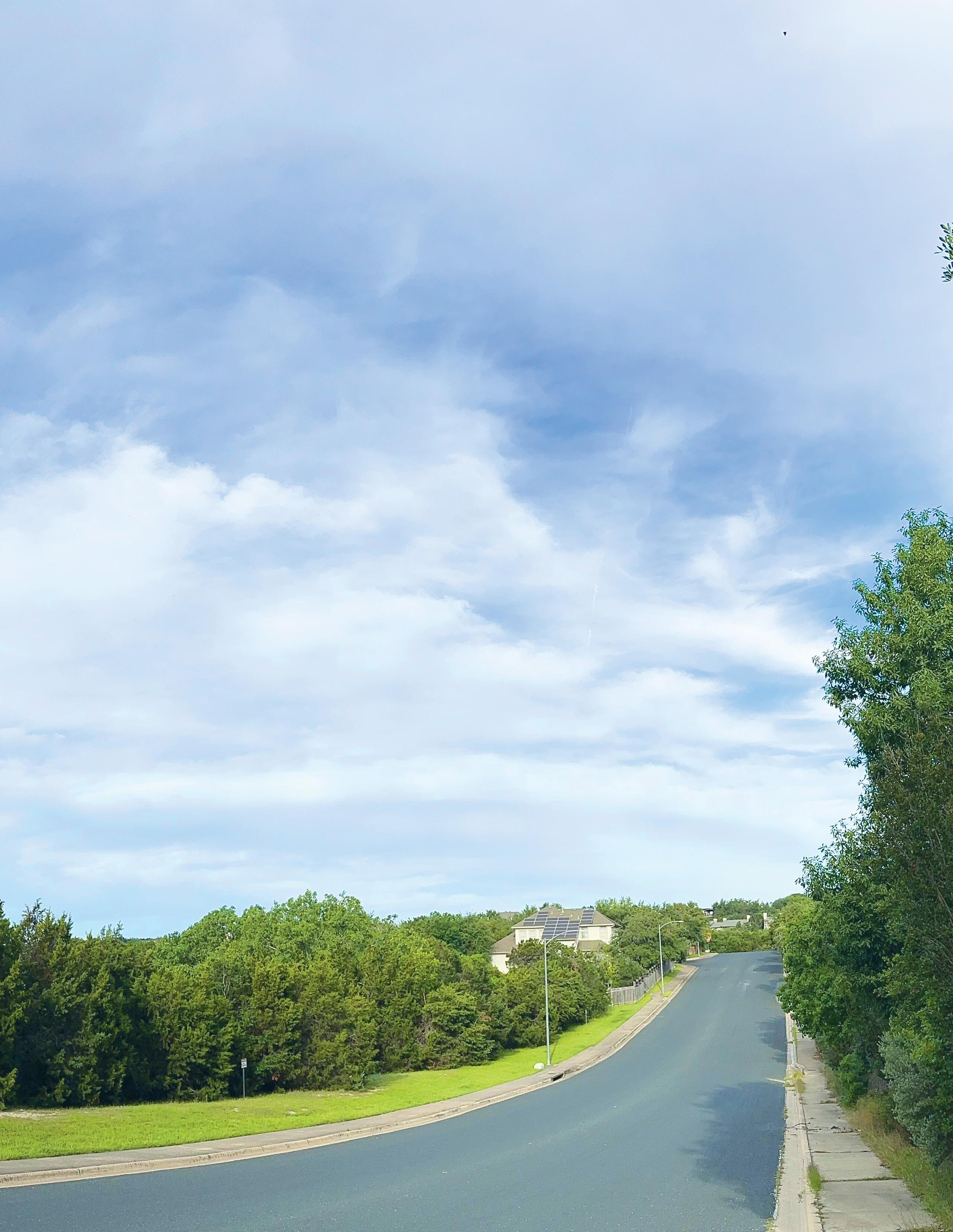
Ezine Spring 2023
Photo
Credit:ClaireNewmark

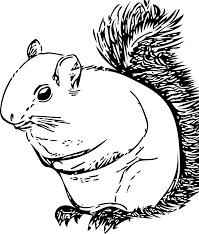



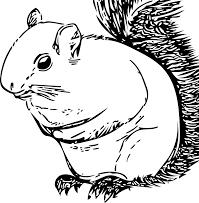
































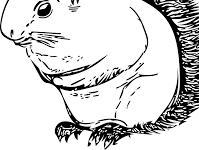














Letter From the Editors

-Page 6
Climate Change Affecting Austin Animals
Charlotte Revesz
-Page 8
Temperature-caused Wildlife Diseases
Charlotte Revesz
-Page 14
Gas Stoves & Politics
Ryan Wu
-Page 16
Democrats vs. Republicans on Climate Policies
Ryan Wu
-Page 20
Table of Contents
Concerning Climate Change | 4
Floras Suffer from Freezes
Claire Newmark
-Page 22
Guide to Your Garden
Claire Newmark
-Page 28
The Battle for Energy

Elliot Wolcott
-Page 30
Climate Change: The Problem with Energy
Elliot Wolcott
-Page 36
Concerning Climate Change | 5
Letter From the Editors




Claire Newmark, 2026, enjoys spending time in nature on hikes with family because it’s relaxing and beautiful. Additionally, she likes to make origami models and read fantasy books. Through her time of creating various origami models, she has come to have an army of more than a hundred origami dragons. She wears tie dyed shirts quite often, and her favorite color is purple. She doesn’t know what she wants to do when she grows up, but she currently likes her math and robotics classes. She looks forward to writing about how plants are affected by climate change, and hopes to show people how they can maintain healthy gardens for Austin’s varying temperatures.

Charlotte Revesz, 2026, enjoys playing piano and viola because music is beautiful and it’s very satisfying when you master a piece. It’s also a good way to meet new friends and be part of a musical community. In addition to music, she enjoys reading realistic fiction books when she can find the time between school and homework. Some fun facts about her include that she is left handed and her favorite color is turquoise. After high school, she hopes to go to college, but is unsure exactly what she wants to study. She looks forward to writing about the impacts of Austin’s changing climate on its animals.

Concerning Climate Change | 6
Elliot Wolcott, 2026, enjoys playing chess with friends because there are many interesting aspects of the game that he can appreciate. An interesting fact about him is that he has loose tendons. Additionally, he aspires to be a trucker for Coca Cola. His favorite class this year is algebra 2 because he really likes his teacher, Mr. Laughead. For the Electronic magazine, he is excited to write about people’s individual perspectives instead of showcasing the more widely recognized perspectives from political leaders and large companies.

Ryan Wu, 2026, likes to play Chess because of its many complexities included within a single chess board. He also likes to play the Caro-Kahn opening for fun when he plays chess, and he likes playing against the Caro-Kahn white as well. Some facts about him is that he would like to be a doctor in the future, specifically an ENT. He is also, by birth, very “fragile”. For the E-Zine, he wants to write about the legislative processes of a relevant climate bill.

Welcome to our magazine! We’re freshmen attending LASA High School. Climate change is an important issue that both negatively affects our lives and AustinÌs wildlife and flora. This inspired us to interview experts to spread awareness about the issue.




Concerning Climate Change | 7
Climate Change Affects Austin Animals

How we are helping our temperatureimpacted wildlife
By Charlotte Revesz

 PhotoCredit:CharlotteRevesz
PhotoCredit:CharlotteRevesz
s temperatures plummet, so do the tree limbs on which baby squirrels live. Freezing temperatures led to brittle branches. As brittle branches began to break, many helpless squirrels fell from trees. They suffered from frostbite as well as the impact of falling from a great height. Because of these difficult conditions, many of the helpless, little squirrels died.
Similar to the squirrels that were affected by our recent freeze, many other Austin wildlife have experienced and continue to experience the negative impacts of temperature changes. As the temperatures continue to range from sudden freezes to blazing hot temperatures in the summer, the local animals are involved in a constant battle with the temperature of their environment.
Hayley Hudnall is the Executive Director at Austin Wildlife Rescue Center. She began her work at the center by providing care for the more than thirty new animal intakes daily. Although her current position as Executive Director is more computerbased work, she still loves to be a part of releasing animals to give them a second chance in the wild.
“Seeing the animals come in orphaned [or] injured, and then we spend the time fixing them or raising them. The day that they get to go back out in the wild is my favorite part- knowing that we did our job. They get to have a second chance.”
Hudnall explains that her job is very focused around providing the best care possible for animals in order to prepare them for release. This field is “learning what’s happening and trying to protect as many animals as you can from it.” The goal is to “make sure it’s very natural so they get what they would in the wild. We’re checking or making sure they’re healthy,
but otherwise, like, we’re very hands-off. By the time we get around for [their] release, they don’t want anything to do with us.”


Hudnall and her coworkers work with the end goal of always being able to release animals back to the wild after their time at the center. They provide help to the animals by doing whatever they need from raising young to their final release.

“We treat them and then as they get older, they move from incubators to cages, to outdoor cages.” She says that they “make sure they’re getting prepared for the wild a little at a time.”
Work at the Austin Wildlife
A
Photo Credit: Austin Wildlife Rescue
Concerning Climate Change | 9
A young deer being cared for at the rescue center
Rescue is an around the clock job with many different moving parts. They work to meet feeding schedules and health checks while still taking in many new animals each day.
“We’re feeding them, getting them medication, and we’re getting them cleaned for the day. Then, we moved on to the next group of animals. They [also] need help. The babies [feed] every three to four hours around the clock and the birds [feed] every 20 minutes. It’s a very fast-paced, multitasking environment, but it’s fun! You never know what animal’s coming in and what you’ll have to do next.”

As we live in “Bat City”, it’s also important to consider the bat populations in our environment.
Erin Cord is an Engagement Manager from Bat Conservation International Community who is passionate about spreading awareness about bats and helping to protect them.
Cord expresses her passion for her work by saying, “I love talking to people about any wildlife and getting people excited about wildlife, specifically bats because they have a bad rap sometimes. There’s a lot of misinformation out


there and getting people to think about the bats [being] part of their local wildlife hopefully creates a sense of stewardship and having people understand why that’s so important.”
With regard to working at Bat Con, Cord explains that it “gives me a good chance to really do what I love, which is conservation, education, communication, community engagement. I feel like we have a really holistic approach to bat conservation where we’ve got a science team and they do lots of really important research, and we’re really committed
to what we do.”
Hudnall explains that temperature is a factor that affects wildlife in their environment . The extreme temperatures often negatively affect wildlife.
“Weather really impacts [them] and a lot of the wildlife is very confused,” Hudnall said. In hot weather conditions “there are fewer resources” and “wild animals are quicker to abandon their babies.”
While the animals are being rehabilitated at the Wildlife center, the staff works hard to manage the needs of the animals and
 Photo Credit: Austin Wildlife Rescue
Photo Credit: Austin Wildlife Rescue
Concerning Climate Change | 10
Armadillo and young chicks being cared for at the rescue center
the temperatures of their enclosures.
“We’re making adjustments all the time depending on the weather,” Hudnall continues, “In freezing temperatures, a lot of the animals were brought back inside.” In the warmer temperatures “we have misting systems that we set up and we’re …changing water multiple times every day.”
Freezing temperatures often pose many negative consequences for wildlife.
“It does seem like [the freezes are] a lot more common.” It’s the “third year in a row that we’ve had like a serious freeze like that, that shut everything down. And [during] this one, we had 63 squirrels come in. The freeze broke all the trees and then all the nests came down with them. We had so many nests that came down and the squirrels came with [them].” In general, this year was “a warmer winter, so then the animals [started] having babies earlier. The baby squirrels started and then it froze, so it was a double hit. They didn’t know what to do.”
Cord also agrees that the animals are being hit very hard by climate change and the resulting extreme temperatures.
“There are so many things
that climate change does” and the wildlife get “hit on so many different fronts…We’re just trying to understand it and bat refuges [are] out there trying to rescue as many bats as they can.”

Similarly to the squirrels and other wildlife, our bat populations suffered greatly from the freeze in 2021.
“When we had the winter apocalypse two years ago, so many bats died from that. A large colony of Mexican free-tailed bats live under Congress Avenue Bridge, and
there are also a lot of other bridges in Austin that house [other] colonies.”
Cord explains that one of the reasons that bats were so severely impacted by the freeze was because of where they were living.
“Man-made habitats are just not good enough to survive these extreme temperatures. The temperature is just not as consistent in the bridges. It works for them and they’ve made it work. But, the temperature fluctuation is
 Photo Credit: Scott Altenbach and Michael Durham
Photo Credit: Scott Altenbach and Michael Durham
Concerning Climate Change | 11
Big Brown Bat (bottom) and Eastern Red Bat (top)
definitely a huge issue.”
Aside from the bat populations and rescued wildlife, Austin has a Nature and Science Center that is home to many varying species of local animals.

Christina Burkovich is a Wildlife Exhibit Coordinator for the Austin Nature and Science Center. She enjoys teaching people about animals and participating in other forms of wildlife conservation.
Burkovich explains that the Nature and Science Center is an excellent place for people to immerse themselves in nature and interact with many different animals.
“The center is a great place to get your hands dirty, get involved, and see what is local to this area. It’s a pretty small facility, but we offer a lot. It’s really neat that anyone can come here and

just get to know a bobcat or get to know the road runner.” Similarly to the rescue center, the Nature and Science Center also takes measures yearly to adjust to the extreme weather.
“During the freezes, we’ll bring all of the animals that we can inside depending on how cold and the severity is. Or we make sure that they’re prepared either with bedding or shelter, whether that’s shelter from wind or precipitation. For the reptiles, we make sure that they have proper heat, light, and proper lighting so that they can absorb the UVB rays and the specific rays that help them process different vitamins and nutrients.When it’s hot out...we can turn the misters on and we’ll offer ice treats. ”
Burkovich believes that the extremes in temperature are becoming increasingly more
common.
“From what I’ve seen, it does sound like these more extreme weather events are happening more often…If we can help slow the process, [] I think that’s part of our job. ”

Hudnall also expresses her opinion about these varying temperatures in Austin.
Hudnall says, “I do think that climate change plays a big part in [the extreme temperatures]. I think overall it is getting hotter. And that’s affecting animals too.”
Burkovich believes that people are having a major influence on the warming temperatures of Austin.
“There’s a lot of evidence that would suggest that humans are having a very big impact on the planet. We are causing [climate change] or we’re really, really contributing to it and making things happen faster.”
In order to reduce our carbon footprint and thus climate change, Burkovich turns to solutions such as reducing plastic water bottles.
“I’d say one of the biggest things is decreasing single-use plastics. I’ve got a reusable water bottle now, and the trouble is, everyone’s got a reusable water bottle and sometimes everyone ends up with 10 reusable water bottles.” She
Photo Credit: Charlotte Revesz
Concerning Climate Change | 12
Sign for the Austin Nature and Science Center
recommends that people continue “decreasing and being more mindful about what you actually purchase, and about what you actually want.”
In addition to reducing plastic water bottles, Burkovich explains that it is also important to reduce the use of plastic bags at the grocery store.
“I know it sounds probably cliche at this point, but reusing your bags at the grocery store” is another way for people to limit climate change. “That all makes a difference if each one of us isn’t using six plastic bags at the grocery store, that adds up.”
Cord details a few measures that people can take in order to help the bat populations.
Cord works to “get people to think about their own personal actions and how they can make their personal

space with the wild.” Cord continues to explain that if people “garden with native plants, put more green space in urban and suburban areas, and make water more available if possible, that’s great.”

Additionally, she says that it is great if you “can have a pond or a trough for bats. Bats need about seven to 10 feet of water to drink because they actually swoop down and drink on the wing.”
Burkovich hopes that

preserving it.
“If you’re exposed to something, you learn to care about it. That helps people take things a little more like it’s their responsibility to help make sure that these animals are here for future generations.”
through her work and other conservationists’ work, people can learn to take more responsibility in helping wildlife and


From our diverse wildlife of bats and squirrels to coyotes and deer, it’s important for us to recognize the impact of our decisions on the environment that we share with nature. Austin wildlife very much depends on our decisions to help sustain their environmental conditions. Currently, it’s clear that we aren’t doing enough because we continue to see an increase in animals affected by climate change, so it is important that we all consider implementing carbon reducing practices into our everyday lives for the sake of these animals.

“If you’re exposed to something, you learn to care about it.”
Photo Credit: Austin Wildlife Rescue
Photo Credit: Erin Cord
Photo Credit: Charlotte Revesz
Hayley Hudnall Austin Wildlife Rescue
Erin Cord Bat Conservation
Concerning Climate Change | 13
Christina Burkovich Austin Nature & Science Center
Temperature-causedWildlife Diseases
Illnesses that are becoming more commonwithincreasing temperatures in Austin
By CharlotteRevesz
Heat
This
Exhaustion
Heat stroke is caused by high temperatures and a lack of water. It can affect most animals such as dogs or cats. Symptoms of this disease include seizures, warm to the touch, and a rapid heartbeat.
Highly Pathogenic Avian Influenza
HPAI (Highly Pathogenic Avian Influenza) is caused by a respiratory and gastrointestinal virus. It can affect birds such as domestic poultry and fowl. Symptoms of this disease include lack of energy, swelling, and coughing.
Sources: cdc.gov, akcchf.org, cornell.edu, procyonwildlife.com, tpwd.texas.gov, tahc.texas.gov, and aphis.usda.gov
is a brief overview of health complications that animals suffer from as a result of our warming Austin environment.
Mange
Mange is caused by microscopic mites that are more likely to survive in warmer temperatures. It can affect animals such as squirrels, porcupines, and coyotes. Symptoms of this disease include hair loss and scabs in more serious cases.
Chronic Wasting Disease
White Nose Syndrome
Chronic Wasting Disease is caused by an infectious protein that is transmitted through the saliva of animals. It can affect deer such as elk, moose, and sika deer. Symptoms of this disease include weight loss, staggering, and exaggerated wide posture.
White-nose syndrome is caused by a fungus called Pseudogymnoascus destructans. It can affect bats that are in hibernation. Symptoms of this disease include a white nose, weight loss, and oftentimes, death.
Gas Stoves & Politics
The Implications & Ramifications of a Gas Stove Ban

As congress sessions inevitably drone by, pointless spending bills are being passed. You inevitably ask yourself, “What the (word) are they doing?” Such events constitute most of what’s happening in the United States Congress. However, this time is different as a Biden Administration official proposed a ban on a mundane house appliance, the humble gas stove.
This proposal caused an outcry among some lawmakers. Lawmakers who opposed the ban said the ban is too outrageous and unreasonable. In a Twitter post, U.S. Representative Ronnie Jackson, R-TX, tweeted, “ … They can pry it out of my cold dead hands. COME AND TAKE IT,”. Senator Joe Manchin, D-WV, called the motion “ A recipe for disaster.”
Proponents of the ban pointed to environmental and health reasons for supporting the motion. Jeff Brady, a journalist on the NPR climate desk who is knowledgeable about the ban and the government, said that one of the reasons for supporting the ban is the gas leakage from stoves..
Daniel Gao, an Environmental Geographer and GSI Analysis, disagrees with Brady’s point. He said, “Burning fuels isn’t the sole culprit or the sole culprit to global warming, sea level rise, and environmental change.” And “It may help, but I have no confidence in the science at this stage because they can’t provide a definitive answer to that question.”
Thomas Catenacci is a journalist on Fox News who extensively covered the gas stove proposal. He affirms Gao’s point, noting the suspicious studies and money donated by the RMI (Rocky Mountain Institute).
Richard Trumka is a CSPC (Consumer Products and Safety Commission) official. He told Bloomberg, “Gas stoves are a hidden hazard.” And that “Any option is on the table” concerning the possible ban, and twenty Democrat congressmen/congresswomen had also asked the CSPC to enact tighter restrictions on gas stoves. Kathy Hochul, the Governor of New York, has called for a complete ban on gas stoves by 2028. This motion joined California, which has planned to ban gas stoves by 2030.

“It is estimated that up to 1.3 percent of the gas used in a stove leaks into the atmosphere. Individually, that’s a small climate impact compared to coal-fired power plants. But if you add up the more than forty million gas stoves in the U.S., the amount of leaked methane every year has about the same climate change effect as the carbon dioxide from five hundred thousand gasoline-powered cars.”
“The RMI has close ties to the Chinese government, who are actively trying to undermine American interest.”
 Richard Trumka
Smoke leaving from a natural gas processing plant
Richard Trumka
Smoke leaving from a natural gas processing plant
Concerning Climate Change | 17
Catenacci further pointed out that the source of conservative outcry was “because of all the contradictions. In January, shortly after the RMI-led study was published, a President Biden-appointed official under the Consumer Product Safety Commission said a ban on gas stoves was on the table. However, after significant criticism from industry groups and GOP(Republican) lawmakers, the White House said it wouldn’t support a gas stove ban.”
Brady, however, isn’t concerned with the Republican opposition, noting that the Republicans are receiving campaign funds from America’s largest oil and gas companies.
“Despite a warming planet, Republicans and the oil industry say there’s room for more growth in domestic fossil fuel production. And that oil and gas companies gave campaign contributions overwhelmingly to the GOP.”

Catenacci also noted this point. When asked about conflicts of interest, Catanacci explained that the money flow isn’t the main issue and that the problem comes with the lack of transparency.
Catenacci: “This is true, although the American Gas Association is more open about their research and donors. One of the organizations that supported the ban, Rewiring America, isn’t an independent organization but is a project of the Windward Fund a nonprofit that is part of the billion-dollar dark money network managed by the Washington, D.C.-based Arabella Advisors. The group’s structure allows its funding to be almost completely hidden from public view, meaning its donors remain unknown.”

However, Gao took a more neutral stance based on the effect of this issue. He said that because he worked with the government in enacting environmental projects, he saw the changes in these projects through the changing administration.
“Even though the contents (of my work) might change also because we’re supporting those programs, not in any way where I can say it’s negative or positive, but just constantly changing especially with technology advancing as it is.”
The impact of gas stoves on human health is questioned, with studies going both ways. Additionally, there is finger-pointing going both ways. Catenacci points to research conducted by the American Gas Association, and Brady points to a statement by the American Public Health Association.
Concerning Climate Change | 18
Modefied Corporate logo for Rewiring America Facebook
Catenacci “One study by the American Gas Association had data collected from more than 500,000 children in 47 countries that detected no evidence of an association between the use of gas as cooking fuel and either asthma symptoms or asthma diagnosis.”
Brady “On the health front, there’s a growing body of evidence that children and those with breathing problems, such as asthma, can experience short and maybe even long-term health effects. The American Public Health Association had just issued a statement calling gas cooking stoves a public health concern. The group called on federal agencies to recognize that and do more to educate people, plus conduct more research on health effects.”
Gao pointed out that instead of focusing on pollution caused by gas, focusing on overcrowding on the roads and the pollution caused by automobiles is more worthwhile.
“For the past ten years, the environment in Austin is just too overcrowded with too many people and too many cars on the road, but during the pandemic with not many cars on the road, the air quality is OK, but before the pandemic, I can say that air pollution is worse.”
The proposal of banning gas stoves that aims to restrict the use of natural gas in households will affect the lives of many. They are saying that it will cause huge inconveniences and that an alternative is either less reliable or unobtainium for the masses. Gao explains the benefits of having gas appliances during challenging times.

“I use natural gas for cooking in my house and for heating. And last week, when the storm [2023 Austin Wind/ Ice Storm] hit, we lost power for three days. Fortunately, we didn’t lose natural gas. So we can cook still, so I used the gas stove and fireplaces to give us some heat.”
Eventually, Congress will be in session again, and gas stoves will be at the forefront of the discussion. With a GOP majority in the house and some Democrats speaking out against the ban, such a measure is unlikely to make it out of Congress. This event has again sparked interest among the American people to discuss the role of government in protecting the environment. While living in such divisive times, such discussions can be heated, but it is best to try and find a permanent solution that will benefit all of humankind.
 United State Congress
United State Congress
All the pictures used in this feature story are either creative common or are correctly credited. Concerning Climate Change | 19


Floras Suffer from Freezes
Austin continues to feel the impacts of freezes on our plants
 By Claire Newmark
By Claire Newmark
 Photo Credit: Charlotte Revesz
Photo Credit: Charlotte Revesz
Anticipation of a snow day filled the halls of LASA High School. Students trudged along under a shadow of exhaustion when suddenly they saw a cloud of ice in the air. Thus the contagious bubble of excitement spread with rumors of a snow day. They walked home with a bounce in their step and fell asleep with a smile on their faces.
Unfortunately for the students, soft, fluffy snow did not fall that night. Instead, they were cursed with freezing rain. The rain coated trees in a layer of ice, weighing down the branches. As the night went on, the ice got thicker and thicker, until the branch splintered and snapped with a resounding crack, falling to the ground. The rain continued into the next day and the one after, bringing with it many more branches to the ground.
Disastrous freezes in both 2021 and 2023 caused large scale power outages. Additionally, these freezes have left devastating effects on Austin’s flora and we continue to see their lasting impacts today.

Colleen Dieter is an ISA (International Society of Arboriculture) Certified Arborist. She offers help and advice for gardening and

landscaping.
“One of the biggest losses that we had at my house [in 2021] was a big American Elm tree that shaded the southwest corner of the house,” Dieter said. “The ice during that storm broke the tree in half because it had a defect and basically half of the top of the tree fell off.”
Additional losses that she had were two huge fig trees. Although they were not killed, both trees experienced large amounts of damage and they are still trying to recover.
“The younger wood split open because the water inside of the branches expanded when it froze,” Dieter said, “So it busted open all the branches really high up and that killed the ends of the branches.”

Matthew Gaston is the Education Director at Zilker Botanical Garden. He studied genetics, plant biology, and education at the University of California, Berkeley.
In 2021, the freeze saw many plants damaged or dead. Many of the gardens in Zilker Botanical Garden
A fallen tree from the 2023 freeze
Concerning Climate Change | 23
Photo Credit: Charlotte Revesz
Scenes from around Austin during and after the 2021 and 2023 freezes were entirely changed by the freeze. One of these was the cactus garden.

“The cactus garden was magnificent,” Gaston said. “It had Saguaro cactus and Barrel cactus, and it was full of cacti and really well designed, really well planted. That huge freeze killed about half of those cacti and then damaged the other ones.”
“The cactus garden probably only has about 40% of what it once had, and a month ago they just removed all the soil and put in new soil,” Gason continued. “Hopefully within the next month or two we can replant it so that it can grow into what it once was. It’s taken two years to get the cactus garden even to where it was in 2021.”
In 2023, Zilker Botanical Garden “had a lot less damage than most places around Austin,” Gaston said. One reason this is the case is “that [they] have good tree care to begin with, so any of the potentially problematic snags or branches were already removed.”

Despite having less damage, the fallen branches after the ice storm were a pain to clean up.

“It took four days for maybe 15 people to clean up the 28 acres,” Gaston said. “It was a ton of work.”
Janice Brown is the head gardener at Mayfield Park. She has been taking care of the Park for 15 years.
Similarly to plants at Zilker Garden, Mayfield Park’s flora also suffered damages in
the 2021 and 2023 freezes. However, the park works to include a garden of primarily native flora that thrive in Austin.




“A lot of things, we cut back obviously because they were dead on the top, but their roots were all fine,” Brown said.
Additionally, spring in Mayfield park was a little less lively than years prior.

“The [plants] that had already started making their flowers,” Brown continued, “got frozen and they didn’t come back that year.”
In general, “Plants that are native here will do much better,” Dieter said, than plants that are not native here. However, native or not, young plants need a little extra attention during a


Concerning Climate Change | 24
Photo Credit: Charlotte Revesz and Claire Newmark
freeze.
“Plants that are newly planted can be really vulnerable because they don’t have all of their defenses ready,” Dieter said. “They don’t have all of their starches and sugars stored in their roots that established plants would, so when they get damaged, they often don’t have enough resources stored up in their roots to be able to grow back or heal.”
Plants that are adapted to cold temperature as well as native Austin flora are better suited to survive freezes.
“We’re USDA, zone eight B, which basically means the mean annual minimum temperature in Fahrenheit is 20 degrees Fahrenheit,” Gaston said. “That means all the plants that are rated for eight B or lower will survive.”


There are also ways to help plants survive a freeze even if they are not adapted for it, or are too young to be able to bounce back.
“Putting frost cloth would be ideal and then watering the plants prior to a good freeze is a general practice with the exception of cacti,” Gaston stated. “You don’t want to water cacti because you don’t want them to expand, and then when it freezes, that ice expands and then they burst.”

Watering plants, other than
cacti, is a very important part of preparing them for a freeze because “It helps the roots and the ground stay warmer and they’re tougher if they’ve been watered,” Brown said.
The loss of plants, even with proper care, can be emotionally draining.
“I felt sad, fearful, discouraged, and traumatized,” Dieter said. “I
felt worried, and it wasn’t just my garden either. There’s all my customers too and a lot of landscapes that I’m really attached to, a lot of plants that I love a lot. Tree damage was very distressing because the trees are so valuable in terms of monetary value and the services that they provide, like cooling your home. Also, just in their size and the investment
Cactus covered in ice after the 2023 freeze
Concerning Climate Change | 25
Photo Credit: Charlotte Revesz
of time that you put in waiting for a tree to grow and planning the whole rest of the landscape around the tree. So, when the trees are damaged or lost, it’s devastating and can be devastating to the landscape and to the earth.”
Dieter continued by saying “There’s a part of me that is an observer and experimenter, so once I accepted the situation, I felt intrigued to see how things would grow back and what shape they would take.”


As a gardener, Brown agreed with Dieter at the wonder of plants, their resilience, and how they handle the freezes.
“I wasn’t terribly worried,” Brown said, “to me, it’s more interesting to see what happens.”
These freezes have not only changed household gardens, but they have left scars on the plants and reshaped the landscape of the city.
“I still see that there’s been a freeze, all over town,”
Dieter said. “I’ll see the tree damage. I can tell when I come to a customer’s house and there’s a stump. I’ll say, ‘Oh, did you lose a tree in the freeze?’ Or I can tell the branches are broken in a funny way. But it’s more like a memory of what Austin used to look like because there used to be Agave Americanos everywhere. And there used to be prickly pear cacti everywhere. And they’re gone. And there used to be more palm trees everywhere. And they’re gone.”
This devastation from the 2021 and 2023 freezes is significant, not only because of the scale, but also because of the timing.
“In all the time I’ve lived in Texas there’s never been three bad winters in a row,” Dieter said, “and we’ve had three bad winters in a row now.”
Gaston shares the sentiment.
“I grew up in San Antonio,” Gaston said. “We had like one significant freeze growing up and now there’s like one every year.”
While on the surface, broken branches and dead plants can be seen, the issue of the freezes goes a lot deeper. If extreme temperatures in Austin continue, larger scale issues will persist.
 Flowers covered in ice after the 2023 freeze
Flowers covered in ice after the 2023 freeze
Concerning Climate Change | 26
Photo Credit: Claire Newmark
“It’s really stressful to me that there’s so much tree damage because the trees are the best defense that we have against climate change,” Dieter said, “because they’re huge and they’re able to draw so much carbon out of the atmosphere and store it in their bodies as wood and put it back into the soil through their relationships with soil microbes. Seeing them get destroyed and torn apart by climate change when we need their help with climate change is really upsetting.”
Gaston also comments on the large-scale issues of climate change.
“[The freezes are] related to changes in the atmospheric gasses,” Gaston said, “and the emissions in the way that capitalism pushes for product and money over the wellbeing of



everything.”
In other words, our society prioritizes cheaper things even if it hurts the environment more than something comparatively expensive. Gaston brings to our attention that although our decisions may not
appear to be contributing to climate change, something as simple as choosing between packaging at the grocery store can greatly impact the environment.
“Then it goes down to even smaller scale levels,” Gaston continued, “Energy companies need to find ways to supply energy and so people don’t lose power when it freezes because it’s going to be freezing all the time. And so then you can’t have trees over the power lines since we’re probably gonna lose a lot of the canopy of trees as time goes on.”
If climate change continues as it is right now, these freezes will impact Austin life and people will have to adapt lest plants will continue to die at unprecedented rates.
 Charlotte’s backyard covered in snow after the 2021 freeze
Photo Credit: Charlotte Revesz
Charlotte’s backyard covered in snow after the 2021 freeze
Photo Credit: Charlotte Revesz
Concerning Climate Change | 27
“Seeing [trees] get destroyed and torn apart by climate change when we need their help with climate change is really upsetting”
Guide to Your Garden
Plants that thrive in Austin
By Claire Newmark
Austin has been seeing increased frequencies of freezes and droughts, and because of this many plants have been lost. Below are some drought tolerant and freeze resistant native plants that you can add to your garden which will survive the seasons of freezing temperatures and little precipitation.
Texas Sage

The Texas Sage is often a compact shrub with bright pink-lavender flowers. It has soft grayish green leaves and grows best in full sunlight or partial shade. The Texas Sage attracts butterflies and other nectar insects and it’s highly deer resistant.

Texas Sabal Palm

The Texas Sabal Palm Tree is a native palm tree that can grow up to 50 feet tall. Its fan-like leaves are 4 to 6 feet long, and the tree can grow in a variety of soil conditions. The Texas Sabal Palm is mainly used as an ornamental plant, and in the summer, it creates round half inch berries.

Eastern Redbud courtesy of Famartin Fall Aster courtesy of David Stang
txsmartscape.com wildflower.org sabalpalmtexas.com thetreecenter.com austinnativelandscaping Concerning Climate Change | 28
Mexican Feather Grass


The Mexican Feather Grass is a grass-like plant with long, thin, silvery green leaves. It grows in both full sun and partial shade. The Mexican Feather Grass is highly deer resistant and it’s used as an accent grass in landscaping.

Eastern Redbud
The Eastern Redbud is a 15-30 foot tree and it has beautiful pink flowers in the spring. The tree grows in full shade or partial shade and it’s moderately deer resistant. The flowers can be added to food such as salads, bread, or pancakes. The Eastern Redbud also attracts native bees, bumble bees, and birds.


Fall Aster
The Fall Aster is a short flowering plant. It blooms in the fall and has purple or violet flowers. It grows in full sun or partial shade and is highly deer resistant. The Fall Aster is a nectar source and attracts native bees, butterflies, and birds.



Texas Sage courtesy of Creative Commons Texas Sabal Palm courtesy of Whitney Cranshaw and Colorado State University Mexican Feather Grass courtesy of David Stang
Concerning Climate Change | 29
The Battle For Energy
How Big Companies Are Fighting Climate Change
By Elliot Wolcott
Energy is something that comes in many forms. However, in modern times we split most of the energy we use in day-to-day life into two categories: renewable and nonrenewable energy. Although many activists have spoken out about companies using nonrenewable resources, many companies have opted to use nonrenewable energy sources. This has created turmoil between the two groups.
Many companies in Austin are centered around energyThe biggest company that uses fossil fuels is Texas Gas Service, (TGS). They do not have a great reputation, as they’re rated 1.8 stars on Google with 91 reviews.
An employee of TGS, Jasmine King-Bush works as an energy efficiency program manager. “My job entails providing a platform for our customers to use our natural gas service more efficiently, hopefully saving money on their bill and helping to save energy.”
She vouches for TGS
because she says “People should know that natural gas can burn very cleanly and that when delivering natural gas to the end user.” Another reason she vouches for TGS is that they “Are constantly engaging with R and D organizations to find out how we can recapture gas and put it back on our lines and use it.” TGS hasn’t shown much of the research they have done, however, it does promise the fact that they are researching with multiple organizations.
The general need from the public has been to electrify everything and to remove all nonrenewable energy sources, however, Jasmine argues that it may not be that simple. She says, “A lot of people want to electrify everything, and I understand that, but they don’t necessarily understand that most electric companies, if not all, get a lot of their power from natural gas.” This has been proven in the past, with a recent blizzard in the Austin area forcing the reliance on
natural gas to get energy to homes throughout Austin. There is very little concern for consequences, as it seems, from the activists. Jasmine supports this idea by continuing from the previous quote, saying, “So if you ban natural gas, you’re really impacting, the ability to get electricity and in Texas specifically, the grid for most of Texas is not very reliable and so, say in storm Urie, a couple of years ago when the electric companies were losing power, our customers, our residential customers still had heat.”
TGS has done the research for creating a more stable platform for natural gas, with the researcher from Austin Energy, Gracie Coates, even stating that “Texas Gas has lobbied to have energy efficiency programs, but we’re not required to, so we don’t make revenue on our programs and we don’t receive any financial incentive,”
A different energy service other than TGS is known for its relatively low
Concerning Climate Change | 30
rating as well. Austin Energy has a rating of 1.5 stars on Yelp with 320 reviews. Most reviews of both companies complain about their customer service.
Gracie Coates decided to speak on the various sources of energy used by large corporations today. “America as a whole has a campaign to go 100% renewable.”
“Texas is part of Environment America, so Austin Energy is one state

chapter. We don’t have chapters in all of the states in the country, but we do have a chapter in Texas.” This means that, although Austin Energy is one company, it is controlled by a larger company in the U.S., called Environment America. The main subject of conversation surrounding Austin Energy and Environment America is how “America as a whole has a campaign to go 100% renewable.” This requires
companies to bottom up and end their entire business, or possibly even have to convert their entire commerce to renewable energy.
Austin Energy encourages renewable energy as a result of America’s plan to go 100% renewable, with lots of research into solar and wind energy. They cannot promise a date when they will go fully renewable, however, that isn’t to say it is impossible.
Concerning Climate Change | 31
A sun rises over the mountains in rural Austin, with power lines streaming along the picture.
Gracie says “We are always encouraging renewable energy. Right now it seems like we don’t have the capacity to completely rely on it right now, so it’s not feasible to say no oil and gas as of 2023, but we’re just trying to get as much renewable energy on the grid as possible.”
It isn’t as if there is not a basis for renewable energy already however, as she stated that “Texas is ranked second in the country for solar and first in the country
for wind power. And they have tripled in the past decade.”
She explained the various types of energy by talking about their pros and cons and considered how each one has its own strengths, however, she believes that nuclear energy is best for the future. She does, however, believe there is a risk that comes with using nuclear energy. Claire stated “So basically with nuclear energy first, there is a risk. America as a whole
believes that there is a risk of using nuclear energy because it can result in death if there is a single manual error. You can process nuclear energy in an open loop system or a closed loop system the way that other countries like France does it, and it’s a continual system.”
A continual loop system is a system that allows for little maintenance with maximum energy output. It eliminates most of the risk by allowing nuclear energy to flourish

Concerning Climate Change | 32
By Fireice~commonswiki,
Diagram of Schematics for an RMBK Reactor

Sakurambo, Emoscopes - Own work based on: Magnox reactor schematic.svg, CC
BY-SA 3.0, https://commons.wikimedia.org/w/index.php?curid=3579057 by itself without any human interaction. The nuclear reactor in Chernobyl was an RBMK reactor, which had some key flaws that made them very unsafe.
Gracie also advocated for natural gas, as it’s a much more stable energy source than renewable energy.
“Unlike other renewables like solar and wind, you can always just use natural gas. It won’t depend on if the sun is shining or if the
wind is blowing. You can just have that as a backup. So it’s more dependable than all renewable energy sources.” Her research concluded that coal, even though it is nonrenewable and still used today, is very inadequate compared to other sources of energy.
“There’s a bunch of different types of coal, and so the more that you mine for coal, the more you run out of the higher density, energy-dense
kind, and you get into the cheaper dirtier coal, which is less energy efficient when you burn it.” This means that coal is unviable for the future, even if we continue to use nonrenewable energy resources.
Even with all the energy types she has researched, most of the energy taken in one state would usually all be put on one state’s power grid. For Austin Energy, their power
Concerning Climate Change | 33
goes on to Texas’s power grid. The main difference with Texas’s power grid is that “Texas has an electric grid, like no other area of the country.” Gracie continues to explain that, “Basically what’s happening right now is that Texas has its own electric grid. It’s separate from the East and the West. So it avoids a lot of federal regulations.” This creates conflict, as with the avoidance of regulations, Austin Energy and Texas Gas Service can avoid lots of requirements.
The future of Austin Energy and Texas Gas Service is changing, however, as she stated that “Basically the PUC (Public Utility Commission of Texas) are thinking about redesigning Texas’s whole electric grid after the winter storm. Now they’re considering what’s called a performance credit mechanism, which is kind of like a capacity market in the way that power generators will have to basically promise a certain amount of energy output in low reserve hours when people need it the most and it doesn’t benefit renewables as much.” This would make it so Austin Energy and TGS would have to promise an amount of energy they would produce during the lows, times when
energy is hard to come by. Some activists have questioned and challenged said companies, such as Paul Robbin who is against both Austin Energy and Texas Gas Service. Paul Robbin has been an on-and-off activist ever since 1979, with his main focus right now being the rates structure in Texas Gas Service.
Paul Robbin has “been working on energy issues on and off since 1977. [He]
Austin Energy. Paul said, “I’ve focused on the two main power providers in the Austin area, Austin Energy and Texas Gas Service.”

Regarding both of the companies, he said that “I would suspect that many large corporations in Austin could do a lot more.”
He said that “Austin Energy to its core [is] frankly, a bureaucracy. But they’ve done a whole lot more than many other utilities in the state and they’ve certainly done a whole lot more than Texas Gas service.”
started out as an anti-nuclear activist opposing the South Texas Nuclear Project.”
“There’s a lot of climate activists out there, including a lot of them in Austin and we’re doing any number of things in the last few years. I have worked on fair electric rates.” Because he is focusing more on fair electric rates rather than other climate issues, he has shifted his focus to TGS and Austin Energy.
Paul Robbin has a lot to say about climate change, especially about TGS and
In short, he sees Austin Energy as a company with no representation of the people’s interests, even though it is “Austin” Energy. In total, he sees the flaws in both companies, with their ideas and how they both run. TGS has been researching ways to cleanly burn natural gas to respond to the requests of the people, however, their rate structure is extremely flawed. Austin Energy has been researching all types of energy but is still using nonrenewable energy. Whether it’s natural gas, nuclear, solar, or wind, some type of cleaner energy sources will likely be incorporated into how we will get our energy from the electric companies in Austin.
“It is not human to live without hope.”
Concerning Climate Change | 34
-Paul Robbin

Climate Change: The Problem with Energy
By Elliot Wolcott
In this ASF I will be introducing the separate opinions of two different age groups. The younger age group was mostly comprised of fourteen and fifteen-year-olds, and the older age group was adults, mainly in their thirties and older. The outcome of these results surprised me in some ways, however, most of the data collected from the younger age group stunned me, as some seem to have very little knowledge of climate change, even though it is a very pressing matter, and a hot topic in current times.
The younger age group chose nuclear with a majority of 36.6%, as the most important currently most likely due to the amount of information available surrounding it. They were very scattered with their answers, however. This may be due to less research they have done in their own time. This may also be due to research in the past they had done, however, they may not have researched the other, more popular choices such as nuclear and solar, resulting in their choices.


The older age group chose solar with a majority of 66.7%. This is most likely due to the idea of using renewable resources, as they would help the younger age groups in the future. I think this is purely because older age groups are more exposed to current-day events through the news, making them worried about the future. One interesting thing, however, is that they did not put wind or hydroelectric higher than nuclear, even though they are renewable resources.
The margin between the pie charts was mainly just the older age group choosing solar over nuclear, although solar was second behind nuclear in the younger age group. The answers were also more scattered in the older age group because there were fewer responses recorded.
It was shown that with the bar graphs and pie charts, the older age group fought and cared more about the Earth’s future which was totally unexpected from my previous assumptions about what the results would be.

Concerning Climate Change | 36
In the bar graphs, respondents answered the question, “How much of your time do you contribute to fighting climate change?” and responded on a scale of one to ten on how much they think they contributed to fighting climate change. In the pie charts, respondents answered the question, “What energy resource do you believe is most important at the moment?” with the choices of wind, solar, nuclear, coal, natural gas, and hydroelectirc.
The younger age group responded that they did less for the environment than the older group. 41 responses were recorded, with their average score being 2.9. This may be because they are busy with extracurriculars, school, and the low possibility to help at a younger age. I believe it also goes to show the little work ethic shown by the younger age group, without them showing much care for how they can help fight climate change.

The older age group mostly all agreed upon how much time they spent towards fighting climate change, 15 responses were recorded with their average being a 5.47. This is close to double the amount the younger age group’s average choice was. This may be due to how much extra time outside of work they have to research such topics, such as being exposed to it in the news. They also have much more of a work ethic. Both the age groups differed greatly in their choice over how much they contribute towards fighting climate change, both averages were relatively low in their own respects, however.
 LASA Students
LASA Students
Concerning Climate Change | 37
Skyview Neighborhood Adults























































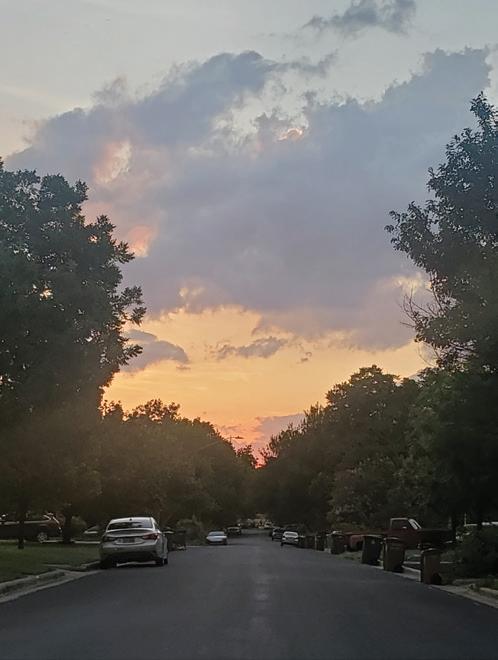

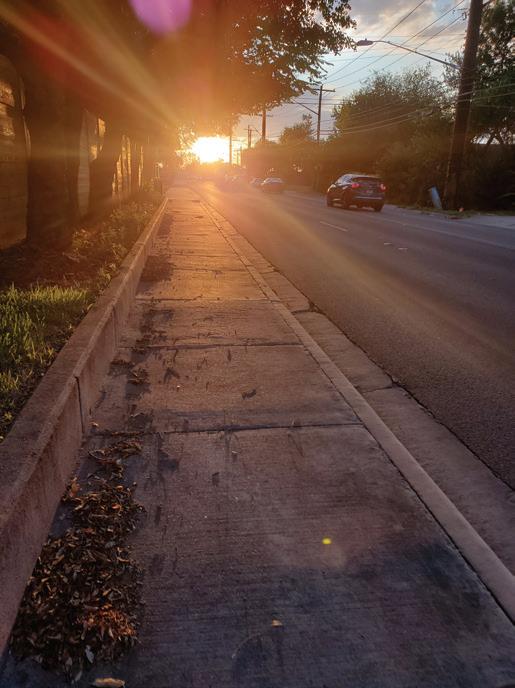
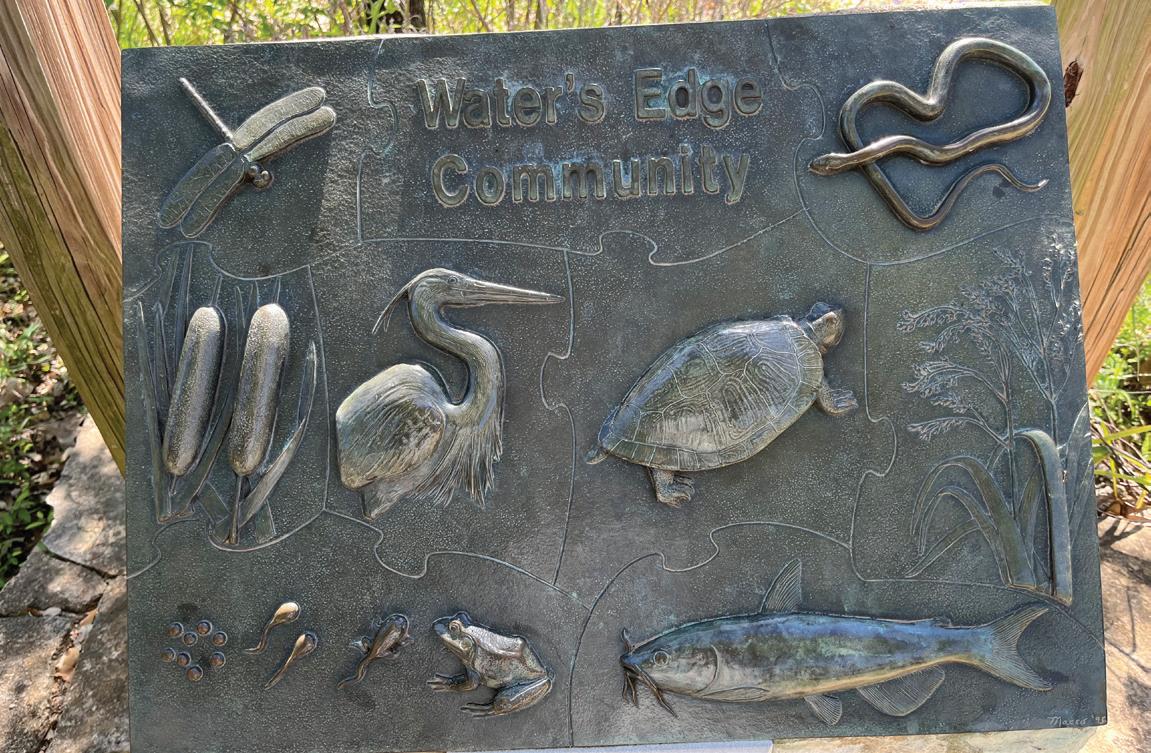
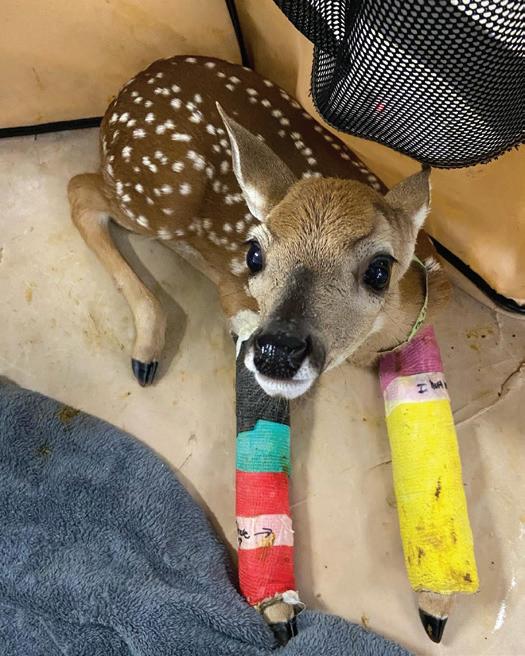
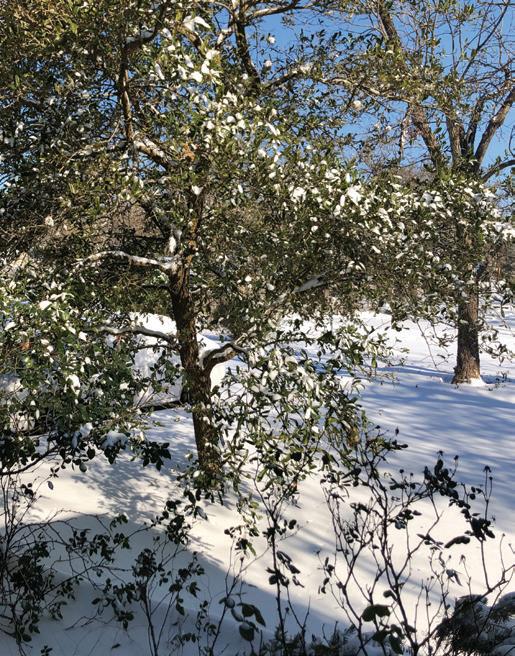

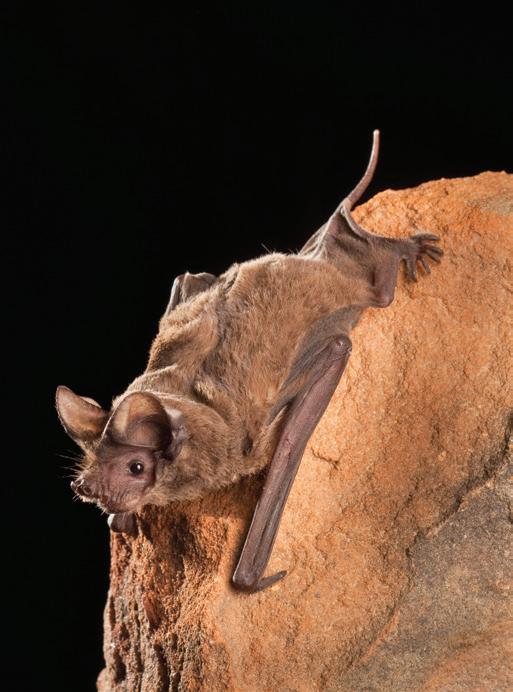


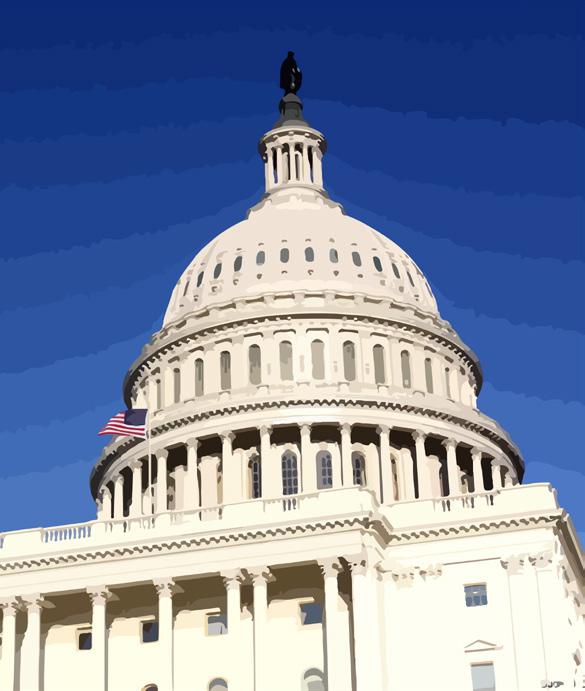 Charlotte Revesz
Charlotte Revesz
Charlotte Revesz
Charlotte Revesz
Elliot Wolcott
Elliot Wolcott
Elliot Wolcott
Michael Durham
Austin Wildlife Rescue
Gage Skidmore
Public Domain
Charlotte Revesz
Charlotte Revesz
Charlotte Revesz
Charlotte Revesz
Elliot Wolcott
Elliot Wolcott
Elliot Wolcott
Michael Durham
Austin Wildlife Rescue
Gage Skidmore
Public Domain









































































 PhotoCredit:CharlotteRevesz
PhotoCredit:CharlotteRevesz




 Photo Credit: Austin Wildlife Rescue
Photo Credit: Austin Wildlife Rescue

 Photo Credit: Scott Altenbach and Michael Durham
Photo Credit: Scott Altenbach and Michael Durham









 Richard Trumka
Smoke leaving from a natural gas processing plant
Richard Trumka
Smoke leaving from a natural gas processing plant



 United State Congress
United State Congress


 By Claire Newmark
By Claire Newmark
 Photo Credit: Charlotte Revesz
Photo Credit: Charlotte Revesz












 Flowers covered in ice after the 2023 freeze
Flowers covered in ice after the 2023 freeze

 Charlotte’s backyard covered in snow after the 2021 freeze
Photo Credit: Charlotte Revesz
Charlotte’s backyard covered in snow after the 2021 freeze
Photo Credit: Charlotte Revesz





















 LASA Students
LASA Students












 Charlotte Revesz
Charlotte Revesz
Charlotte Revesz
Charlotte Revesz
Elliot Wolcott
Elliot Wolcott
Elliot Wolcott
Michael Durham
Austin Wildlife Rescue
Gage Skidmore
Public Domain
Charlotte Revesz
Charlotte Revesz
Charlotte Revesz
Charlotte Revesz
Elliot Wolcott
Elliot Wolcott
Elliot Wolcott
Michael Durham
Austin Wildlife Rescue
Gage Skidmore
Public Domain
